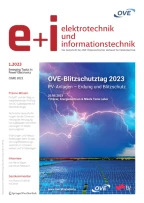Zusammenfassung
Unterschiedliche Methoden zur Visualisierung von Eigenschwingungsformen einer ebenen Platte werden verglichen: Ein Laser-Doppler-Vibrometer, eine Abtastung des Schalldrucks mittels Mikrofon im Nahfeld, Akustik-Holographie im Nahfeld, eine analytische Berechnung und die Berechnung mittels Finiten Elementen. Für diese Untersuchung wird eine ebene Platte von der Größe 380×382×2,9 mm verwendet. Für die Messungen mittels akustischer Holographie und die Schalldruckmessung mittels Mikrophon wurde die Platte durch einen elektrodynamischen Shaker angeregt, wobei als Anregungssignal weißes Rauschen im Frequenzbereich von 20 Hz bis 6 kHz verwendet wurde. Die unterschiedlichen Methoden ergeben ähnliche Ergebnisse. Trotzdem hat jede Methode ihre spezielle Eignung für verschiedene Frequenzbereiche und Anwendungen. Die Ergebnisse der akustischen Holographie und mittels Mikrofon abgetastetem Schalldruck im Nahfeld sind relative Größen und können ausschließlich für die Identifikation von Schwingungsformen verwendet werden, während das Laser-Doppler-Vibrometer absolute Ergebnisgrößen liefert.
Summary
Different methods for a visualization of plate vibration modes are compared: a laser scanning vibrometer, a microphone scanning in a very near field, a near field acoustic holography, an analytical calculation, and a finite element method calculation. A plate with dimensions of 380×382×2.9 mm was used for the experiment. During measurements for acoustic holography and during the scanning with a pressure microphone the plate was excited with a shaker, using a white noise signal, in the frequency range from 20 Hz to 6 kHz. Different methods provide similar results. However, each method is intended for a different frequency range and for different applications. Results of the near field acoustic holography and of the scanning with the pressure microphone in a very near field are relative and can only be used for mode shape identifications, while the laser scanning Doppler vibrometer can produce traceable results.
References
Cox, P. E., Fliesser, W. (2000): Exploring the limits of spatial resolution of noise sources using sound intensity visualization and laser Doppler velocimetry. Proc. of the Europ. Conf. on Vehicle Noise and Vibration, ImechE, London, 2000
de Bree, H-E., Svetovoy, V. B., Raangs, R., Visser, R. (2004): The very near field – Theory, Simulations, and measurements of sound pressure and particle velocity in the very near field. ICSV-11, Petersburg 2004
Fließer, W., Arndt, R., Rein, D., Priebsch, H. H. (2003): Critical comparison of measurement techniques applied to noise source detection of vehicle powertrains. ICSV-10, Stockholm, 2003
Leissa, A. W. (1969): Vibration of Plates, National Aeronautics and Space Administration. SP-160
Martarelli, M., Revel, G. M. (2006): Laser Doppler vibrometry and near-field acoustic holography: Different approaches for surface velocity, distribution measurements. Mech., Syst. Signal Process., 20: 1312–1321
Nelisse, H., Beslin, O., Nicolas, J. (1998): A generalized approach for the acoustic radiation from baffled or unbaffled plate with arbitrary boundary conditions, immersed in a light or heavy fluid. J. Sound Vib., 211 (2): 207–225
Qiao, Y., Huang, Q. (2005): The sound radiation characteristic from un-baffled rectangular plates. Int. J. Mech. Mater. Des., 2: 245–258
Shuyu, L. (2002): Study on the radiation acoustic field of rectangular radiators in flexural vibration. J. Sound Vib., 254 (3): 469–479
Author information
Authors and Affiliations
Rights and permissions
About this article
Cite this article
Prezelj, J., Černe, D., Ottowitz, L. et al. Investigation on identifying structural modes by sound pressure signals. Elektrotech. Inftech. 126, 194–199 (2009). https://doi.org/10.1007/s00502-009-0641-5
Received:
Accepted:
Published:
Issue Date:
DOI: https://doi.org/10.1007/s00502-009-0641-5
